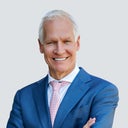Hello! Thank you for your question! Breast augmentation is a procedure often sought by women to increase size, add upper pole fullness and projection along with improve shape and symmetry of her breasts. Women who have the breast augmentation done report increased self-confidence, self-esteem, and more comfortable with her body. In fact, it has been the most popular procedure in plastic surgery in the US for the past few years. You Are a candidate, given there are no medical contraindications for surgical procedures. Given your age, consideration for a lift will help shape your breasts as well and the implant will serve to give fullness, size, and perkiness. Things to to consider during your consultation, which your surgeon will discuss with you, include implant type (saline vs silicone), shape/texturing of implant (round vs shaped/textured vs non-textured), implant position (sub pectoral, subglandular, or subfascial), incision (inframammary fold, periareolar, axillary, or TUBA), and size of implant. This can be performed with/out a breast lift, which would serve to obtain symmetry in breast size or nipple position as well as improve shape. Good communication between you and your surgeon of your expectations is warranted - choosing your surgeon wisely is the first step. Discussion of your wishes and having an honest and open dialog of your procedure is mandatory. I have found that photographs brought by the patient is helpful to get a visualization of the appearance you wish for in terms of size, shape, fullness, etc. In addition, your surgeon's pre and postoperative photographs should demonstrate a realistic goal for you. Once this has been accomplished, allow your surgeon to utilize his/her best medical judgment during the procedure to finesse the best possible result for you after preoperative biodimensional planning and fitting the right implant for your breast width. Too large of implants for the woman often destroys the breast pocket and breast shape, thus creating an oft seen in correctable problem later. In general, implant size does not correlate with cup size. The cup size itself will vary from manufacturer to manufacturer as well as who is doing the actual measurements. Thus, cup size or implant size is never a reliable indicator for your breast size. I typically encourage my patients not to communicate her desires in cup size but more on the actual look and appearance. Hope me that this helps! Best wishes for a wonderful result!












